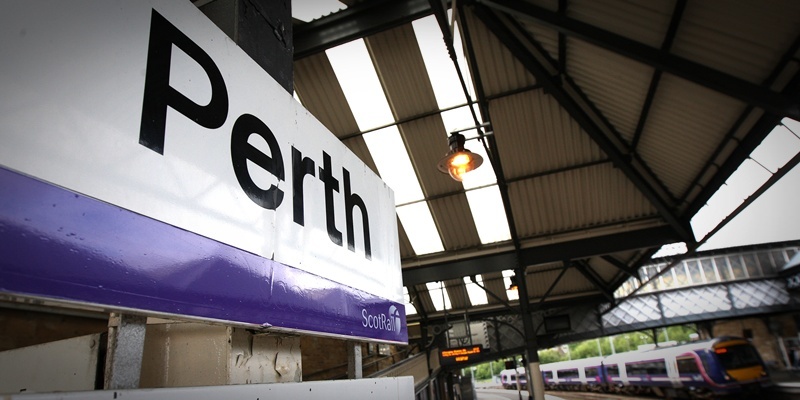Plans to transport tonnes of hazardous material through Scotland have raised fears in communities along the likely route.
Environmental groups reacted with horror to the suggestion that 50 train loads of potentially hazardous material could pass south from Dounreay for reprocessing at Sellafield.
The movement of 44 tonnes of breeder material could start as soon as this summer, according to a presentation given to Highland Council by the Nuclear Decommissioning Authority (NDA).
Although not confirmed, it is expected the uranium metal tubes used to produce plutonium would take the most direct route, starting from Inverness and moving down the main line southwards, through Perth.
Critics swiftly hammered the plan and savaged the nuclear industry.
Scottish Greens MSP Patrick Harvie said: ”Transferring this nuclear fuel by rail imposes an unacceptable level of risk on those communities along the route, and I urge Highland Council to reject the proposal on these grounds.
”Greens want to see this material dealt with where it was generated, by storing it securely and with the option of retrieving in the future. I’m confident that Scotland will never again choose to back a technology that leaves us with such a toxic and expensive legacy.”
The trains could pass through Dunkeld, just metres from the WWF Scotland headquarters. Its head of policy, Dr Dan Barlow, said: ”People may be surprised to learn that dangerous material like this might be passing beside or through their community.
”The risks associated with moving nuclear fuel and waste is just another reason why Scotland is right to resist building a new generation of nuclear power stations.”
Friends of the Earth Scotland also said the material should be dealt with at Dounreay.
Chief executive Stan Blackley said: ”Transporting nuclear waste is unnecessary and risky, with enormous potential for accidents and mistakes. Existing nuclear waste should be securely stored, with full retrievability, above ground and as close as practical to where it arose, in this case at Dounreay.
”This would at least benefit the local community through the creation of long-term jobs. There is simply no easy way to deal with the historic waste from Scotland’s nuclear past, some of which will remain potentially deadly for thousands of years.
”We need to stop producing the stuff in the first place, by closing and safely decommissioning all of Scotland’s remaining and ageing nuclear establishments as quickly as possible.”
But the NDA stressed the Caithness site no longer has such capability as it addressed Highland Council on the plans in Inverness. Dr Adrian Simper said the site is being demolished and decontaminated, and there would be no way to restore it if nuclear material were to be retained there.
He said: ”We have an obligation across the entirety of our estate to make best use of taxpayers’ money. There is also an environmental obligation to reduce the number of new facilities that we have to construct to handle the material as part of our decommissioning clean-up.
”So where possible we will be using existing facilities in our estate rather than building new ones.”
He said that Direct Rail Services, a subsidiary of the NDA, had carried nuclear material over 10 million rail miles without mishap. Although the exact time of the trains would not be revealed for obvious reasons, he said as much information as possible would be released.
Approval for the plan is being sought by the Office for Nuclear Regulation and Office for Civil Nuclear Regulation.
A spokesman for Perth and Kinross Council said: ”If required to, Perth and Kinross Council will work with all the relevant agencies to ensure that any transportations of this type can be carried out safely.”
Breeder is classed as material and not as fuel or waste, by the NDA. It comprises cylinders of uranium metal, about 150mm long and 35mm in diameter.
The estimated cost of preparing the material for transportation by rail is £30m and the same amount for dealing with it at Sellafield.
